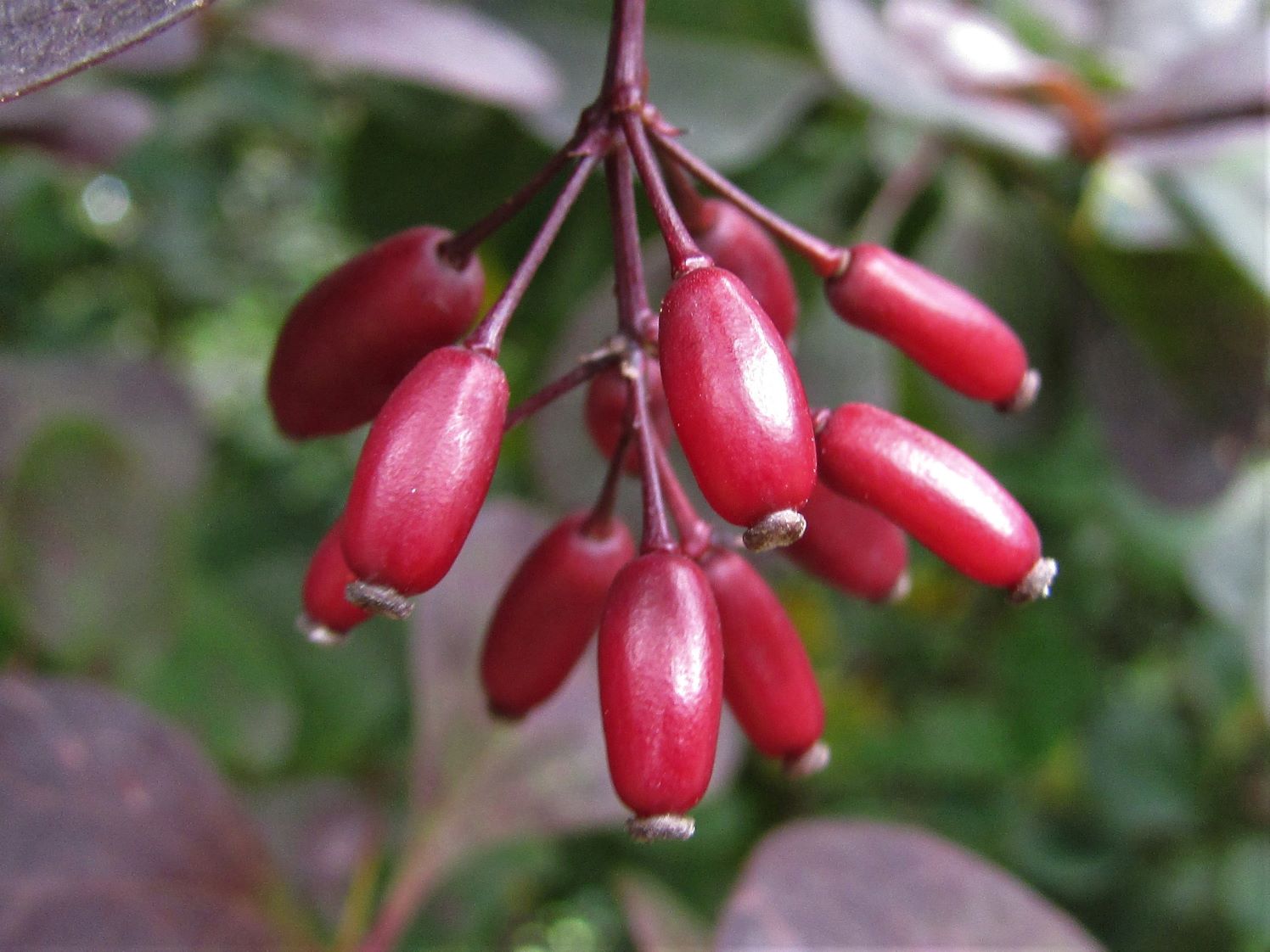
When it comes to the world of culinary delights, barberry is a unique and fascinating ingredient that often goes unnoticed. This small, bright red fruit is packed with a tangy and tart flavor that can add a burst of complexity to a wide range of dishes. However, there is much more to barberry than just its taste.
In this article, we will explore 20 interesting facts about barberry that will surely pique your curiosity and expand your knowledge of food. From its historical significance to its health benefits and culinary uses, barberry is a versatile ingredient that deserves a closer look. So, let’s dive in and discover the fascinating world of barberry!
Key Takeaways:
- Barberry, a colorful and tangy plant, has a rich history and is packed with antioxidants and nutrients. It’s used in cooking, medicine, and even supports butterfly populations!
- Barberry is a versatile and resilient plant with a unique flavor profile. It’s not only used in traditional dishes and herbal remedies but also adds beauty to gardens with its vibrant berries and thorny branches.
Barberry has a rich history dating back thousands of years.
The use of barberry can be traced back to ancient Egypt, where it was admired for both its beauty and medicinal properties. The plant then spread through the Middle East and Europe, becoming an integral part of various cultural practices and cuisines.
The scientific name for barberry is Berberis.
The genus Berberis encompasses around 500 species of deciduous and evergreen shrubs. These plants are known for their thorny stems, distinctive flowers, and clustered berries.
Barberry is prized for its vibrant berries.
The berries of the barberry plant are small, round, and come in a range of colors, including red, yellow, and blue-black. They add a pop of color to dishes and are often used as a natural dye or garnish.
Barberry is a potent source of antioxidants.
The berries of the barberry plant are rich in antioxidants, such as vitamin C and berberine. These compounds help protect the body against oxidative stress and reduce the risk of chronic diseases.
Barberry has a unique flavor profile.
The tart and tangy taste of barberry is often described as a combination of citrusy and slightly bitter notes. It adds a distinct flavor dimension to various dishes, including jams, sauces, and Middle Eastern-inspired dishes.
Barberry is used in traditional medicine.
For centuries, barberry has been utilized in traditional medicine for its therapeutic properties. It is believed to have anti-inflammatory, antimicrobial, and anti-cancer effects, among other beneficial qualities.
Barberry is a natural source of berberine.
Berberine, a compound found in barberry, has been the subject of numerous scientific studies due to its potential health benefits. It has been shown to aid in the management of various conditions, including diabetes, digestive disorders, and cardiovascular issues.
Barberry is used in Iranian cuisine.
In Iranian cuisine, barberry plays a prominent role and is often featured in dishes such as pilaf and saffron-infused rice. The tartness of barberries adds a delightful contrast to the savory flavors of the dishes.
Barberry is a popular ingredient in traditional European dishes.
In Europe, barberry is used in various traditional recipes. For instance, in Germany, it is commonly used in jams, jellies, and liqueurs, while in France, it is utilized in tarts and fruit compotes.
Barberry is a host plant for butterflies.
Some species of butterflies, including the endangered Barberry Carpet Moth, rely on barberry as a host plant for their larvae. This interdependence highlights the importance of barberry in supporting biodiversity.
Barberry has been used to make natural dyes.
The vibrant pigments found in barberry berries have been used for centuries to create natural dyes for fabrics. The colors extracted from barberry range from vibrant reds to soft yellows, offering a sustainable alternative to synthetic dyes.
Barberry has a place in folklore and mythology.
Throughout history, barberry has been mentioned in various folk tales and myths. In some cultures, it is believed to ward off evil spirits, while in others, it is associated with luck and protection.
Barberry is a low-maintenance plant.
Barberry is known for its resilience and adaptability. It thrives in a wide range of climates and soil conditions, making it a popular choice for landscaping and garden enthusiasts.
Barberry has spiky thorns for protection.
The thorny nature of the barberry shrub serves as a natural defense mechanism against herbivores and unwanted intruders. It also adds an element of texture and visual interest to gardens and outdoor spaces.
Barberry is an important ingredient in traditional herbal remedies.
In traditional herbal medicine, barberry is used to treat a variety of ailments, including digestive issues, urinary tract infections, and skin conditions. Its powerful medicinal properties have made it a staple in many natural remedy formulations.
Barberry is a valuable source of nutrients.
In addition to antioxidants, barberry contains essential vitamins and minerals such as vitamin K, iron, and manganese, which contribute to overall health and well-being.
Barberry has been used in the production of alcoholic beverages.
In certain regions, barberry has been utilized in the production of alcoholic beverages. The berries are fermented to create unique tasting wines, liqueurs, and aperitifs.
Barberry has a wide range of culinary applications.
From savory dishes to sweet treats, barberry can be incorporated into a variety of recipes. It adds a delightful tanginess to salads, rice dishes, pastries, and even cocktails.
Barberry has been researched for its potential anti-inflammatory effects.
Studies have shown that the active compounds in barberry possess anti-inflammatory properties, which may help reduce inflammation and alleviate symptoms associated with inflammatory conditions.
Barberry is a visually stunning addition to gardens.
With its vibrant berries, thorny branches, and colorful foliage, barberry adds visual interest and beauty to gardens and landscapes. It is often used as a hedge, border plant, or focal point in garden design.
Now that you’ve discovered these intriguing facts about barberry, you have a deeper appreciation for this versatile plant. Whether you’re exploring its culinary uses, harnessing its medicinal benefits, or simply enjoying its aesthetic appeal, barberry continues to captivate and inspire.
Conclusion
In conclusion, barberries are a fascinating plant with a rich history and numerous benefits. From culinary uses to medicinal properties, barberries have proven to be a versatile and valuable addition to any kitchen or home garden. Their tangy taste and vibrant red color make them a popular ingredient in dishes around the world. Additionally, their high levels of antioxidants and numerous health benefits make them an excellent choice for promoting overall well-being.Whether you’re using barberries as a flavorful addition to your recipes or reaping the rewards of their impressive nutritional profile, it’s clear that barberries deserve a spot on your radar. Explore their unique flavors, experiment with different recipes, and enjoy the many benefits that barberries have to offer. So go ahead, embrace the tangy and delightful world of barberries and elevate your culinary experiences to new heights.
FAQs
Q: What are the health benefits of barberries?
A: Barberries are rich in antioxidants, vitamin C, and other essential nutrients. They have been associated with improved digestion, a strengthened immune system, and even potential anti-inflammatory effects.
Q: Are barberries safe to consume?
A: Yes, barberries are generally safe to consume. However, it’s essential to consume them in moderation, especially if you have any underlying medical conditions or take specific medications. Consult with a healthcare professional if you have any concerns.
Q: How can I incorporate barberries into my diet?
A: Barberries can be used in various ways, such as in salads, jams, sauces, and even baked goods. They add a tangy flavor and a pop of color to dishes. You can also snack on them as a delicious and nutritious treat.
Q: Where can I find barberries?
A: Barberries can be found in health food stores, specialty grocery stores, or online. You may find them dried or as extracts, which are both convenient options for incorporating them into your diet.
Q: Can I grow barberries at home?
A: Yes, barberries are relatively easy to grow and can thrive in a variety of climates. They require well-draining soil and prefer full sun or partial shade. Consider adding barberry plants to your garden or patio for a beautiful and functional addition.
Was this page helpful?
Our commitment to delivering trustworthy and engaging content is at the heart of what we do. Each fact on our site is contributed by real users like you, bringing a wealth of diverse insights and information. To ensure the highest standards of accuracy and reliability, our dedicated editors meticulously review each submission. This process guarantees that the facts we share are not only fascinating but also credible. Trust in our commitment to quality and authenticity as you explore and learn with us.


